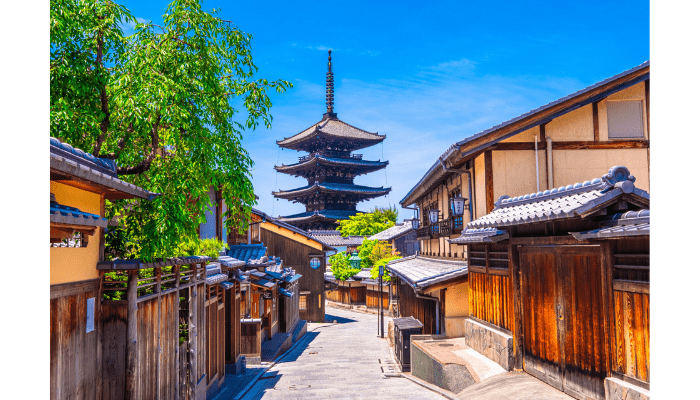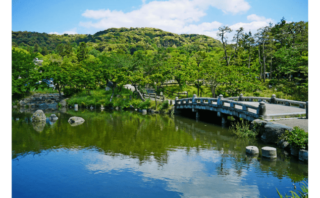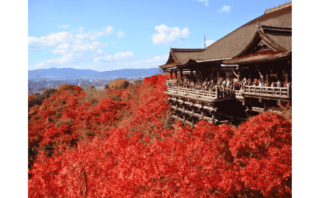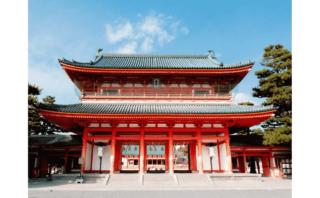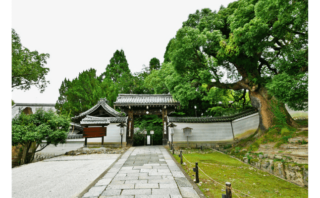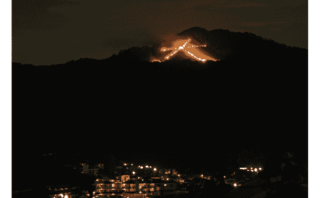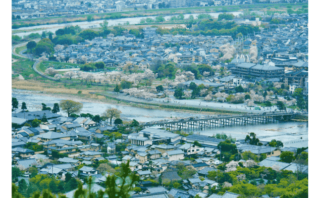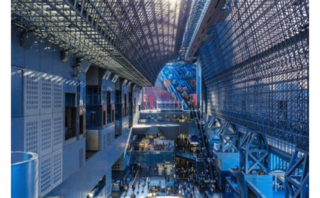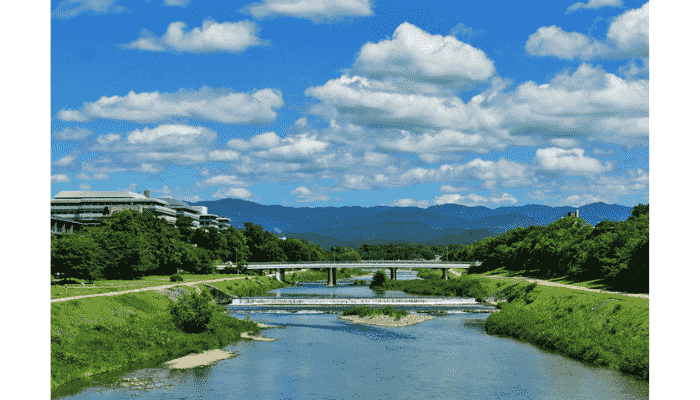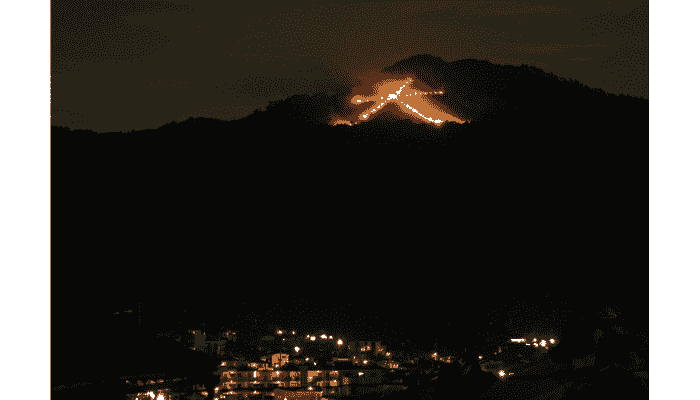One of the most remarkable things about Kyoto is how seamlessly the city blends with its many tourist attractions. You don’t even need to plan out your route—just wandering around the city will lead you to famous temples, shrines, and hidden gems.
The area between Nijo Street and Gojo Street, slightly east of Kyoto’s city center, is especially rich with attractions. A simple walk along the Kamo River offers countless sightseeing opportunities.
For history lovers, the area is also home to temples and historical sites such as Shoren-in, Chion-in, and Kennin-ji, which are especially popular for their evening illuminations.
Yasaka Shrine

Yasaka Shrine, fondly called “Gion-san” by locals, is a popular Kyoto attraction. Every New Year, it welcomes around one million visitors, making it the second most popular spot for hatsumode (New Year’s shrine visit) in Kyoto, after Fushimi Inari Shrine.
Yasaka Shrine is also the heart of the Gion Matsuri, one of Japan’s three major festivals. This month-long celebration starts on July 1st, with the highlight being the grand processions of floats (Yamaboko Junko) on July 17th and 24th.
In 2016, the Gion Matsuri float procession was recognized as a UNESCO Intangible Cultural Heritage.

One spot within the shrine that’s been gaining attention recently is “Utsukushi Gozen-sha” (Beauty Shrine), located to the right of the main hall. The spring water here, known as “beauty water,” is said to not only improve skin when applied but also purify the heart.
While every season in Kyoto is beautiful, my top recommendation is to visit during the Gion Matsuri. Though the summer heat and crowds can be intense, the festival’s vibrant atmosphere is truly unforgettable.
Yasaka Shrine (Kyoto)
- Address: 625 Gionmachi Kitagawa, Higashiyama-ku, Kyoto
- Map: [Google Maps]
- Access: 5-minute walk from Gion Shijo Station (Keihan Line)
- Phone: 075-561-6155
- Hours: Open 24 hours (Shrine Office: 9:00 AM – 5:00 PM)
- Website: Yasaka Shrine
Maruyama Park
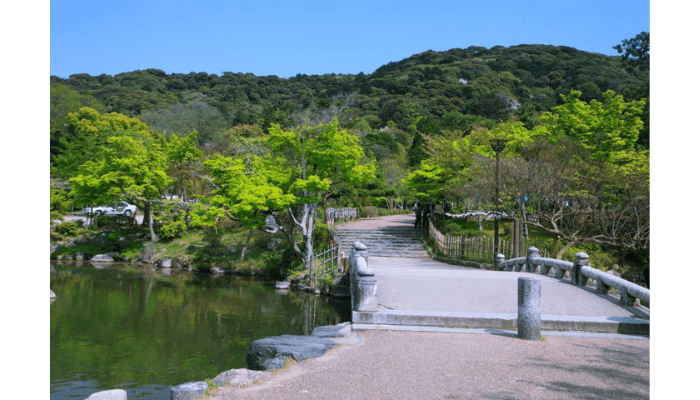
After visiting Yasaka Shrine, be sure to stop by Maruyama Park. Opened in 1886, it’s Kyoto’s oldest park and is now a designated National Site of Scenic Beauty.
Originally part of the grounds of several temples, including Yasaka Shrine and Chion-in, the park was separated during the Meiji Restoration.

Maruyama Park is Kyoto’s top cherry blossom viewing spot. The most famous tree is the weeping cherry, known as “Ichihiganzakura.” While the original tree died in 1947, the current one is its successor.
The park is especially popular at night, with the cherry blossoms beautifully lit up, attracting crowds for evening hanami (cherry blossom viewing).
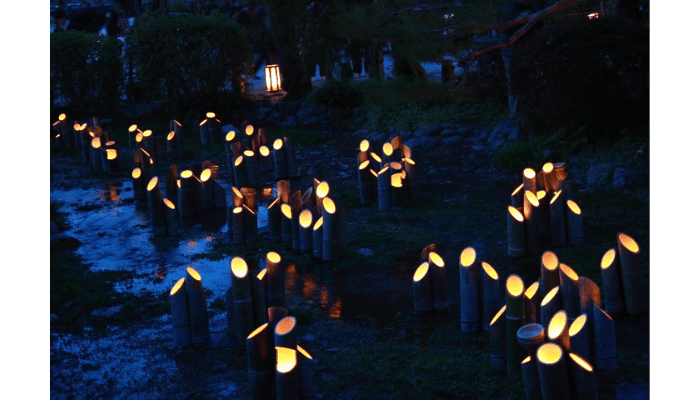
In March, the park also participates in the Higashiyama Hanatouro event, where around 500 bamboo lanterns create a magical atmosphere.
Maruyama Park
- Address: Maruyamacho, Higashiyama-ku, Kyoto
- Map: [Google Maps]
- Access:
- 12-minute walk from Gion Shijo Station (Keihan Line)
- 13-minute walk from Kawaramachi Station (Hankyu Line)
- 15-minute walk from Sanjo Keihan Station (Subway)
- Phone: 075-561-1350
- Hours: Open 24 hours (Spring illuminations: Sunset to 10:00 PM)
- Admission: Free
- Website: Maruyama Park
Kiyomizu-dera
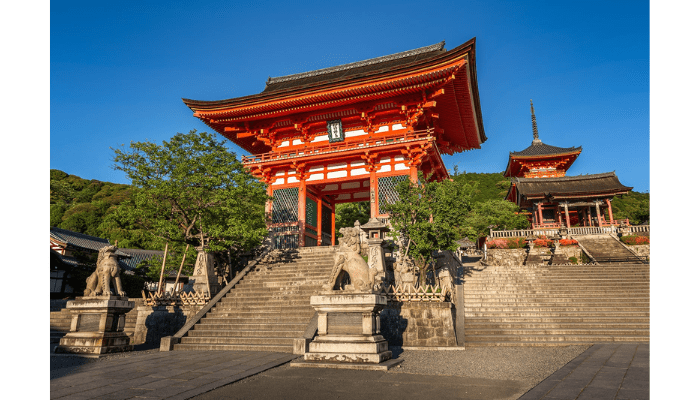
Among Kyoto’s many famous sites, Kiyomizu-dera ranks at the top. Locals affectionately call it “Kiyomizu-san.”
Founded in 778, Kiyomizu-dera has a long history. It was officially established by military commander Sakanoue no Tamuramaro in 780.
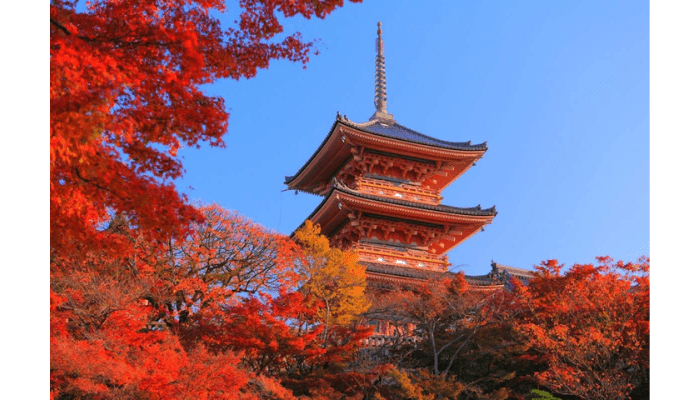
The temple’s name comes from a poem by Sakanoue no Tamuramaro, referencing the pure waters of the Otowa Waterfall. Sadly, the temple has burned down several times throughout history.
The current main hall was rebuilt in the Edo period by Tokugawa Iemitsu and is nearly 400 years old, a testament to Japanese architectural skill.
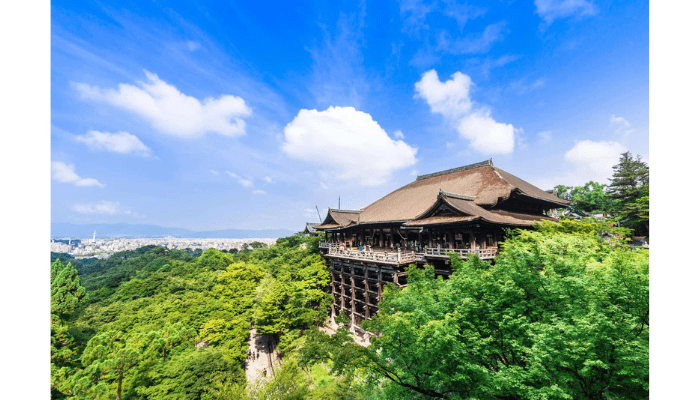
Perhaps the most famous feature of Kiyomizu-dera is its large wooden stage, known as the “Kiyomizu Stage.” It’s built without nails and supported by 168 massive pillars.
Kiyomizu-dera
- Address: 1-294 Kiyomizu, Higashiyama-ku, Kyoto
- Map: [Google Maps]
- Access: 10-minute walk from Gojozaka Bus Stop (City Bus No. 206/100)
- Phone: 075-551-1234
- Hours:
- 6:00 AM – 6:00 PM (Closes at 6:30 PM in July and August)
- Special Night Openings (Spring, Summer, Autumn) until 9:00 PM
- Admission: 400 yen (Adults), 200 yen (Children)
- Website: Kiyomizu-dera
Heian Shrine

Located in Kyoto’s Sakyo Ward, Heian Shrine was built to celebrate the 1100th anniversary of Kyoto becoming Japan’s capital, with Emperor Kanmu enshrined here.
At the time, Kyoto had declined due to the move of the capital to Tokyo and the chaos of the late Edo period. Heian Shrine was part of a movement to revive the city and restore its traditional beauty.
The shrine is famous for its vast gardens, where beautiful seasonal flowers bloom throughout the year. In spring, over 20 types of cherry blossoms, including weeping cherry trees, attract many visitors.
The shrine buildings are modeled after the main palace of the Heian Period, built at 5/8 of the original scale. Interestingly, there were some issues with acquiring the land, so the placement of the main gate is slightly off from where it would have been in the past.
The view of Heian Shrine, which recreates the ancient capital, is stunning and worth seeing. Be sure to visit on your trip to Kyoto!
Heian Shrine
- Address: 97 Okazaki Nishitenno-cho, Sakyo-ku, Kyoto
- Map: Google map
- Access:
- 5-minute walk from “Okazaki Park Museum/Heian Shrine” bus stop (Kyoto City Bus 5, 100, 110)
- 10-minute walk from “Higashiyama” Station (Kyoto Subway Tozai Line)
- Phone: 075-761-0221
- Close: Open all year
- Hours:
- Shrine hours: 6:00 AM – 6:00 PM (Hours vary slightly in winter)
- Garden hours: 8:30 AM – 5:30 PM (Spring and summer hours are extended)
- Admission: Free (Gardens: Adults 600 yen, Children 300 yen)
- Official Website: Heian Shrine
Shoren-in Temple

Shoren-in Temple, founded by the Buddhist monk Saicho, has its roots in a small hermitage he established on Mt. Hiei. The temple is known for its peaceful atmosphere and stunning Kyoto scenery.
Visitors can enjoy beautiful views of the temple’s pond reflecting colorful autumn leaves. A slow walk around the temple grounds is a wonderful way to take in the tranquil surroundings.
Besides autumn leaves, Shoren-in is also home to a lovely bamboo grove. While Arashiyama’s bamboo forest is more famous, the bamboo at Shoren-in is equally beautiful.
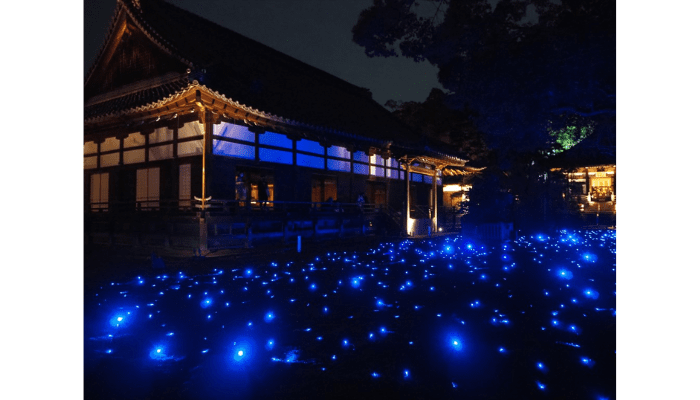
The temple’s highlight is its magical nighttime illumination. Blue lights create an enchanting atmosphere that attracts many visitors each year, especially couples looking for a romantic experience.
Though it is well known among locals, Shoren-in is not as widely recognized by tourists. This makes it a great spot to explore the essence of Kyoto without the usual crowds.
Shoren-in Temple
- Address: 69-1 Awataguchi Sanjobo-cho, Higashiyama-ku, Kyoto
- Map: Google Map
- Access:
- 3-minute walk from “Jingumichi” bus stop (Kyoto City Bus)
- 5-minute walk from “Higashiyama” Station (Kyoto Subway Tozai Line)
- Phone: 075-561-2345
- Open all year
- Hours:
- Daytime: 9:00 AM – 5:00 PM (Last entry: 4:30 PM)
- Night illumination: 5:00 PM – 9:30 PM (Last entry: 9:00 PM)
- (Temporarily unavailable until fall 2024 due to roof repairs)
- Admission:
- Adults 500 yen,
- Students (Junior High and High School) 400 yen,
- Children 200 yen
- Official Website: Shoren-in Temple
Nanzen-ji Temple

Nanzen-ji, the head temple of the Rinzai Zen sect, is best known for its beautiful brick aqueduct, called Suirokaku. Inspired by ancient Roman aqueducts, it was built to transport water from Lake Biwa to Kyoto, and has become a symbol of the temple.
The stylish design of the aqueduct and its scenic surroundings make it a popular spot for photographers and tourists alike. It’s often featured in Japanese TV shows and anime.

When I visited in summer, the area around the aqueduct was refreshingly cool, even under the hot sun. It’s a perfect spot to take a break while exploring the temple grounds.
Nanzen-ji Temple
- Address: Nanzenji Fukuchicho, Sakyo-ku, Kyoto
- Map: Google map
- Access:
- 10-minute walk from “Keage” Station (Kyoto Subway Tozai Line)
- 10-minute walk from “Nanzenji-Eikando-michi” bus stop (Kyoto City Bus)
- Phone: 075-771-0365
- Closed: December 28-31
- Hours:
- March to November: 8:40 AM – 5:00 PM (Last entry: 20 minutes before closing)
- December to February: 8:40 AM – 4:30 PM
- Admission Fees:
- Hojo Garden: Adults 600 yen, High School Students 500 yen, Children 400 yen
- Sanmon Gate: Adults 600 yen, High School Students 500 yen, Children 400 yen
- Nanzen-in Temple: Adults 400 yen, High School Students 350 yen, Children 250 yen
- Official Website: Nanzen-ji Temple
Kyoto City Kyocera Museum of Art

Located in Okazaki Park, Kyoto City Kyocera Museum of Art (formerly Kyoto Municipal Museum of Art) is the second largest art museum in Japan.
Kyoto has long been a center of Japanese culture and art, dating back to when it was the capital of Japan during the Heian period. Reflecting this history, the museum was first established as the “Imperial Ceremony Memorial Kyoto Art Museum.” During World War II, it was used by the occupying forces but was returned to the city and renamed Kyoto Municipal Museum of Art in 1952.
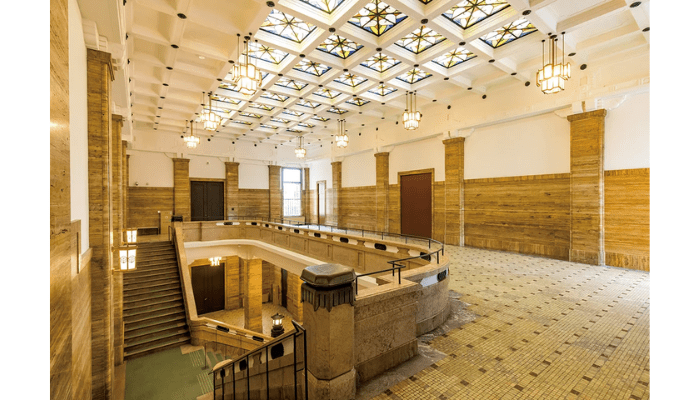
The museum collects and exhibits artworks, supports artists, and promotes art education through exhibitions and workshops for the public. It’s highly recommended for those interested in Japanese culture and art.
Kyoto City Kyocera Museum of Art
- Address: Okazaki Enshoji-cho, Sakyo-ku, Kyoto
- Map: Google Map
- Access: 10-minute walk from Higashiyama Station (Subway Tozai Line)
- Hours: 10:00 AM – 6:00 PM (Last admission 30 minutes before closing)
- Closed: Mondays and during New Year holidays
- (if Monday is a holiday, open and closed the following day)
- Admission: Varies by exhibition
- Website: Kyoto City Kyocera Museum of Art
Takayama Hikokuro Statue
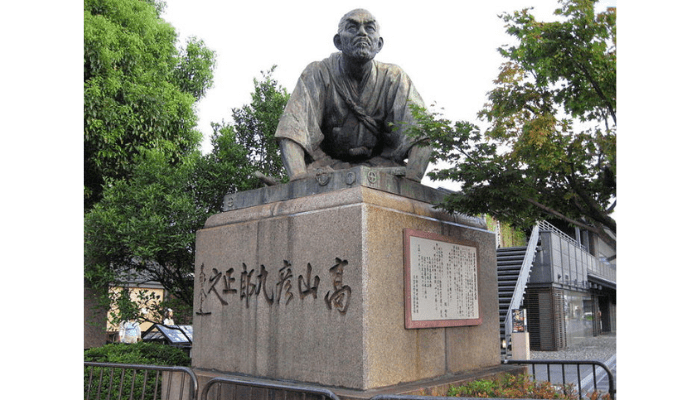
This statue of Takayama Hikokuro, located near Sanjo Ohashi Bridge, is one of Kyoto’s three famous bronze statues, alongside the statues of Sakamoto Ryoma and Sumunaga Ryoji.
Takayama Hikokuro was a thinker in the late Edo period, known for his loyalty to the emperor. The statue is often referred to as the “Bowing Statue,” but he’s actually shown bowing in respect toward the Kyoto Imperial Palace, not in a submissive position.
Built in 1928, the original statue was lost during WWII due to metal collection, but it was recreated later. It’s a rare spot many people pass by without noticing.
Takayama Hikokuro Statue
- Address: Sanjo Ohashi East, Kyoto
- Map: Google map
- Access: Near Sanjo Ohashi intersection
Yasui Konpiragu Shrine

Yasui Konpiragu Shrine is famous for helping people cut bad ties and form good ones. The shrine’s main deity is Emperor Sutoku, who is also enshrined at Konpira Shrine in Kagawa Prefecture, known for ascetic practices.
The most famous feature here is the “Enkiri Enmusubi Stone,” covered with paper talismans. Visitors write down the ties they want to cut or the good relationships they want to attract, then crawl through the stone’s hole from front to back to cut bad ties and from back to front to welcome good ones.
It’s a popular spot for those seeking to change their relationships.
Yasui Konpiragu Shrine
- Address: Higashiyama-ku, Kyoto
- Map: Google Map
- Access: 1-minute walk from “Higashiyama Yasui” bus stop or 10-minute walk from “Gion Shijo” Station
- Hours: 24 hours (Office hours: 9:00 AM – 5:30 PM)
- Admission: Free
- Website: Yasui Konpiragu Shrine
Jishu Shrine
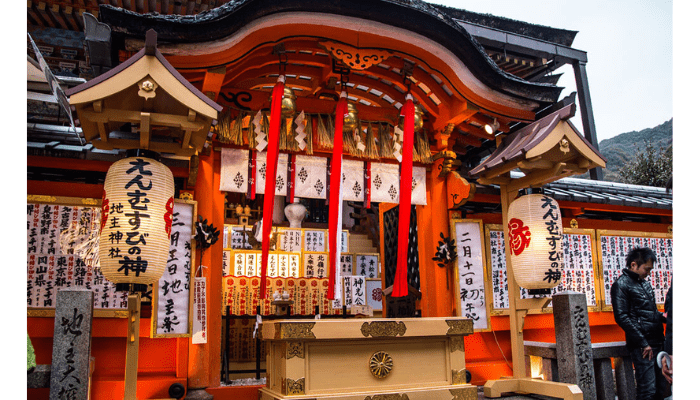
As of February 2023, Jishu Shrine is closed for about three years for restoration work. Check their official website for updates.
Jishu Shrine, known for love and matchmaking, is said to have been founded before Japan itself. The famous “Love Fortune Stones” have been dated back to the Jomon period. Many poets have written about this sacred spot in their collections.
Before visiting, it’s important to learn the proper way to pray: purify yourself, offer a coin, bow twice, clap twice, and bow again. The shrine’s colorful buildings are also designated Important Cultural Properties, so be sure to admire their beauty.
Jishu Shrine
- Address: Kiyomizu 1-chome, Higashiyama-ku, Kyoto
- Map: Google Map
- Access: Bus from Kyoto Station or Gion Shijo Station, get off at “Gojozaka” stop
- Hours: 9:00 AM – 5:00 PM
- Admission: Free
- Website: Jishu Shrine
Kyoto National Museum
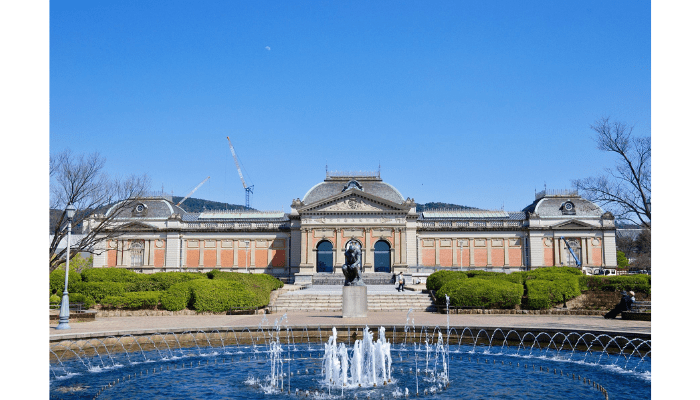
The Kyoto National Museum mainly showcases Kyoto’s most important historical cultural treasures.
Beyond exhibitions, the museum also conducts research and other projects focused on preserving and promoting cultural assets.
The origins of the Kyoto National Museum date back to 1889, when the Japanese government decided to establish imperial museums in Tokyo, Kyoto, and Nara. Kyoto’s museum opened in 1897 and later became part of Japan’s cultural heritage protection efforts in 1924. Over time, it expanded through partnerships with various agencies and now operates as an independent institution.
The museum offers a range of programs, including lectures about its exhibits, special showcases with music and video, and even traditional Japanese performances like rakugo storytelling with guest artists.
It’s a must-visit for anyone interested in exploring the rich cultural heritage of Kyoto.
Kyoto National Museum
- Address: Chaya-cho, Higashiyama-ku, Kyoto
- Map: Google Map
- Access: 15-minute walk from Kyoto Station or by bus (get off at the “Hakubutsukan Sanjusangendo-mae” stop)
- Hours: 9:30 AM – 5:00 PM (Last admission 30 minutes before closing)
- Closed: Mondays and New Year holidays (Closed the next day if Monday is a holiday)
- Admission: Varies by exhibition
- Website: Kyoto National Museum
▼ Related Articles for Kyoto Sightseeing
